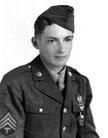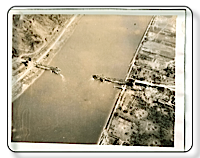"The Bridge at Remagen" by By Daniel Rapp
|
|
From March 10 to March 17, 1945 a fierce battle raged between American and German forces. The prize of the battle was the only remaining bridge across the Rhine- “I was at the Remagen Bridge, he said with a smile. “The 299th was one of the first units to the bridge. I was working radio relay when the message came through that the bridge was intact. This was big stuff. I woke up the colonel with the news and within minutes we were in a truck headed for the bridgehead. It was about midnight. All through the ride I was furiously tapping out the message to unit after unit from a wireless. “They had been fighting over it for several days, when my team was called to the bridge structure itself. A 200 kg aerial bomb was wedged in the steel structure. The problem was the fuse access cover was against the steel ‘V’ of the structure. |
 jjjjjjjjjjjjjjjjjjjjjjjjj jjjjjjjjjjjjjjjjjjjjjjjjj |
“I can’t say it was the most memorable thing from the war. That happened at D-Day, Omaha Beach. Our Higgins boat stopped way short of the beach. The gang plank dropped and immediately an anti-tank shell exploded up front. Several men were hit and I stepped over and around them to get out. They told us in training not to stop to help wounded comrades, but to press the attack. |
|
|
 |
 |
Copyright © 2006 / All rights reserved. |









